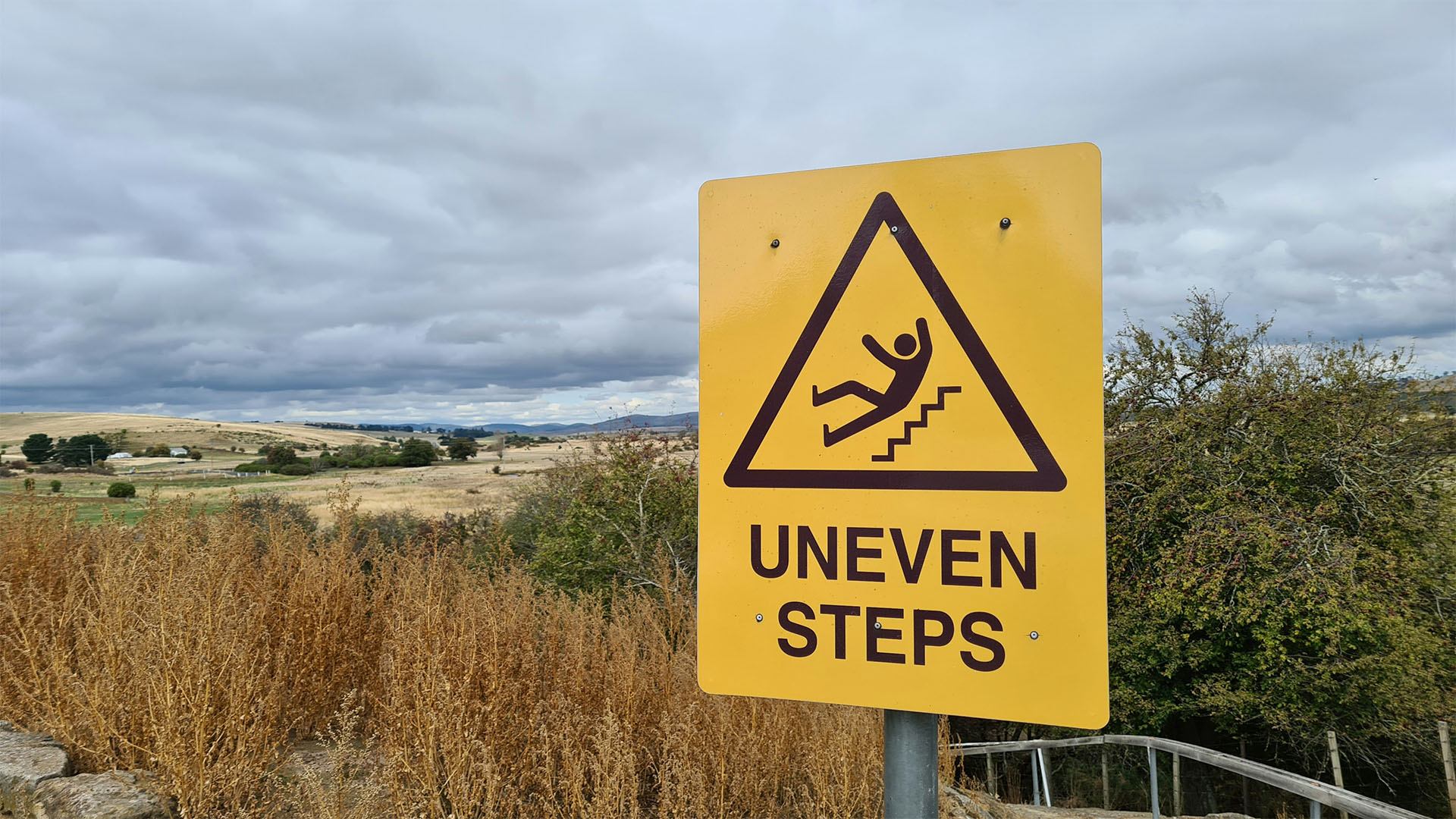Getting injured at work can be extremely difficult to navigate given that there are several factors that play into appropriate compensation for your injury. Workers that get injured on the job in California are entitled to worker’s compensation benefits. These benefits provide an injured worker with the medical treatment they need to recover, expenses that help cover lost wages during recovery, and assistance returning to work. These benefits typically cover injuries sustained in a workplace accident, injuries sustained through repetitive movement at work, and illness caused by exposure to dangerous work environments. The cost of these benefits is paid into by employers and the benefits should be available to all California employees who suffer an injury at work. In the event that a worker’s compensation claim is denied, there is additional recourse through personal injury claims in the state of California.
1. Get Medical Treatment for Any Injury at Work
Getting medical treatment is the priority when suffering any kind of serious injury and that is no different when sustaining a workplace related injury. Do not wait until the day is done and if it is an emergency, head to an emergency room or call 911 immediately. When being seen by medical staff, inform them that the injury or illness is job related so they can make a note for the worker’s compensation claim. After medical treatment has been taken care of, contact your employer to inform them of your injury and wait for further instruction. If the injury is not a medical emergency, inform your employer to see where medical treatment should be sought out. Employers will typically have in-network doctors available to examine your injuries, but it is also recommended that an individual suffering a workplace related injury get a neutral 2nd opinion.
Can I See My Preferred Doctor for a Work-Related Injury?
When first sustaining a workplace related injury, employees most likely won’t be able to select the doctor they seek for treatment. Employers will use the insurance companies who often have a health care group that has a network of doctors available for worker’s comp treatment. While this may be the case, there is nothing stopping injured employees from seeking out a 2nd opinion from their primary care physician to see if diagnosis and treatment are appropriate for the injury or illness sustained. There is also an exception that allows employees to select their personal primary care physician if they can provide their employers a written request before an injury is sustained.
2. Report the Injury or Illness to Your Employer
When an employee is injured or becomes ill due to dangerous work conditions, the other important thing that needs to be done is file a written report that informs the employer of the details of injury or illness and the circumstances that led to the report. This should be done as soon as an injury or illness develops to avoid problems, delays in receiving benefits, or potential disputes with the claim.
Workplace Injury Statute of Limitations
While the statute of limitations for filing a worker’s compensation claim in California is one year from the time of injury, injuries sustained at the workplace should be reported to an employer using written notice within 30 days. This minimizes the chance that the claim will be disputed or denied since the injury was reported and treated promptly. By delaying the claim and / or treatment, insurance companies can potentially say that the injury was not work related, which can impact the likelihood of receiving appropriate compensation. There is a portion of the worker’s compensation claim paperwork that needs to be filled out by the employee and returned to the employer which can serve as the written notice needed by employers. When filling out the worker’s compensation claim, it is important to identify the type of workplace injury. California labor code identifies 2 types of injuries sustained in the workplace:
- Specific injury: This category of workplace injury happens when there is a single exposure or accident that results in an injury / illness that requires medical attention or results in disability.
- Cumulative trauma injury: This type of injury is sustained over time through repetitive traumatic activities or exposure to hazardous working conditions over time. Both physical and mental trauma can qualify under this category.
Cumulative trauma injuries like repetitive stress fractures or carpel tunnel syndrome make identifying the start date of an injury difficult. Under these circumstances, the initial injury typically starts with the first date that work was missed due to injury, or the date medical treatment was needed. There are certain circumstances when an individual may be exempt from the worker’s compensation statute of limitations. When an employee’s injury results in a coma, prolonged treatment, or quarantine, an employee may not be able to file the correct paperwork in time. Under these circumstances, an employee will be able to extend their filing period.
3. File a Worker’s Compensation Claim
Filing for worker’s compensation will protect an employee’s rights to start the worker’s compensation process. The claim form will be provided by an employer within a 24-hour period of an employee sustaining a workplace related injury.
Do I Qualify for Worker’s Compensation Benefits?
California law states that eligibility for worker’s compensation benefits requires an employee to be injured or become ill due to work related circumstances. This means that any injuries or illnesses that were the result of doing your job while employed should be covered. The types of injuries of injuries that are covered under worker’s compensation include:
- Accidents that occur while on the job: These types of injuries occur when an individual is hurt at work. This could be from falling, being struck by an object, or overexertion. This does not cover injuries sustained while on a lunch break or commuting to and from work. This also includes injuries sustained while traveling for work but not commuting to and from work.
- Repetitive motion injuries: Repetitive stress injuries (RSI) are typically caused by repeated motions that build over time. Carpel tunnel syndrome, herniated discs, and stress fractures are all examples of RSIs.
- Occupational illnesses: Exposure to hazardous materials like chemicals, asbestos, and radiation can lead to serious debilitating illnesses.
- Aggravation of pre-existing conditions: Injuries normally must be sustained at work to qualify for worker’s compensation, but any aggravation of existing injuries that require medical treatment also qualify.
It is important to note, that infectious illnesses are not covered by worker’s compensation. The only exceptions to this rule are if a job places an employee at a higher risk of exposure than the general public, and that there is medical evidence that the illness was contracted while at work. Under these rules, COVID-19 related illnesses that resulted from workplace exposure are covered if:
- The illness is contracted by those in fields with a higher rate of potential exposure including first responders and healthcare workers.
- An outbreak in a workplace has occurred and employees were exposed during this period without reasonable accommodations to prevent contracting COVID.
How to Fill Out a Worker’s Comp Claim
The worker’s compensation claim form has 2 separate sections. Employees are responsible for completing the “employee” section and then signing and dating the document. Once the employee section is completed, the form should be sent into the employer to finish. If the document must be sent to the employer via mail, be sure to have it sent via certified mail and request a return receipt. This will provide the injured party with a record of the date it was mailed and received by the employer.
What Happens After a Worker’s Compensation Claim is Filed?
Once the worker’s compensation form is received by an employer, they have a duty to fill out their portion and send in the completed claim to their insurance provider. The employer must then provide the employee with a copy of the completed form. If not, an employee has the right to request a copy. Within 14 days of filing, the insurance carrier of the worker’s compensation claim will notify the employee by mail of the status of the claim. If notice is not provided by the insurance company within that period, and employee should follow up to determine the status.
If the Worker’s Comp Claim is Accepted
Notice of a worker’s compensation claim being accepted will typically be issued by a claim administrator within 90 days from when the claim is submitted by your employer. If notice is not provided, a workplace related injury is assumed to be covered by worker’s compensation.
What Benefits Is an Injured Party Entitled To?
If a claim is accepted, the insurance benefits typically provide:
- Medical treatment: The insurance that your employer pays into will cover the costs of treatment necessary for an employee to make a recovery from the injury or illness sustained at work.
- Total temporary disability benefits: These benefits are payments made to the injured party in the event they lose wages while recovering. They are paid out while an individual is unable to work for a period of time.
- Temporary partial disability benefits: When an injured employee is not completely disabled but is limited by conditions or restrictions on their ability to work, they may be rewarded temporary partial disability payments to offset any loss in income they incurred from losing the ability to perform certain aspects of their prior role.
- Permanent disability benefits: Permanent disability payments are made if full recovery is never achieved, and an employee is no longer capable of working or limited in the type of work they can perform.
- Supplemental job displacement benefits (SJDB): If partial recovery prevents an employee from returning to their prior role, vouchers can be issued to assist with retraining for skills that can replace the previous pay.
- Death benefits: In the event of a workplace related death, payments to the survivors of the injured party will be made.
What if I Disagree with the Benefits?
If there is a disagreement between the injured party and the treating physician employed by the claims administrator, the injured party may be evaluated by a qualified medical evaluator (QME). To qualify as a QME, a doctor will have to meet the minimum education and licensing required by the state of CA. QMEs must also be trained, tested, and participate in on going education as it pertains to the worker’s compensation evaluation process. If a QME is used in a dispute, they will start a process called independent medical review to provide a thorough 2nd opinion.
What if the Worker’s Comp Claim is Denied?
If a worker’s compensation claims administrator believes that an injury is not covered by worker’s compensation, they will deny your claim. Any worker’s compensation denial can be disputed but there are strict deadlines for filing a dispute. If this happens, having the support of a qualified worker’s compensation attorney is recommended. If an injured employee disputes the denial, the case will be placed in front of a worker’s compensation administrative law judge for review.
How to Object to the Worker’s Comp Claim Denial?
To challenge a worker’s compensation claim denial, an injured employee can file an application for adjudication of claim. This application will need to be filed at one of the 24 department of worker’s compensation offices located in the county where an employee lives or where an employee was injured. In addition, an application must also be served to the claims administrator to ensure they are informed of the dispute and so they can show up to the judgement. The DWC location that received the application for adjudication of claim will send a notice to the injured employee that the application was filed with an assigned case number that will be used to refer to the case moving forward.
How to Get a Workers Comp Hearing with a Judge?
Once the application for adjudication of claim is filed and notice of filing has been received by an injured employee, the injured employee can file a Declaration of Readiness to Proceed to request a hearing with a judge. A hearing called a mandatory settlement conference will be scheduled which will require the injured employee and the claims administrator to appear before the judge. The judge will hear the case and attempt to assist with reaching a settlement but if a settlement is not reached at this point, a trial date will be set. Another trial will be held with a different judge who will listen to each party’s case and issue a decision. The decision made by the trial judge will be mailed out to the parties within 30 – 90 days of the trial. If either the injured employee or the claims adjustor disagrees with the ruling, they can file for a Petition for Reconsideration.
When is My Worker’s Comp Claim Resolved?
A worker’s compensation claim is fully resolved when either there is an agreement between the injured party and the claims administrator or when a judge issues a decision about the benefits that must be provided to the injured party.
What Types of Settlements Are Available?
There are a couple ways that your worker’s compensation claim settlement can be paid out:
- Stipulations with requests for award:
- Payments – The injured employee and the claims administrator will agree upon the disability payments which are typically paid out in weekly payments.
- Medical care – The claims administrator will pay for any approved medical care.
- Compromise and release:
- One payment – The claims administrator will determine an amount necessary to resolve the worker’s compensation claim and pay that amount in one lump sum.
- Medical care – The lump sum will typically include the estimated cost of future medical care which then becomes the responsibility of the injured employee to pay.
Am I Entitled to Any Other Benefits for Work Related Injuries?
Depending on the nature and severity of the work-related injury, and injured employee can also try and collect Social Security Disability Insurance (SSDI) benefits. It is important to note that benefits could be reduced if the combined amount of benefits from both worker’s compensation and SSDI exceed a given amount. California State Disability Insurance (CASDI) is usually unavailable for work related injuries, but an injured employee may be able to receive interim benefits from CASDI if a worker’s compensation claim is denied or in the process of a dispute that delays the payout of worker’s compensation benefits. Under this exception, CASDI will need to be repaid by the worker’s compensation benefits once funds are awarded.
What Injuries Wouldn’t Qualify for Worker’s Comp?
Employees injured while on the job or performing the duties of their role are entitled to worker’s compensation benefits. That said, there are a few instances where employees are not covered.
- Injuries that occur while employees are on a meal break
- Injuries sustained while participating in a non-related work event like company outing or holiday party
- Injuries that were the result of an accident commuting to or from work
- Injuries sustained while violating safety guidelines
- Injuries that were the result of being intoxicated on the job
What is the Difference Between a Worker’s Compensation Claim and a Personal Injury Lawsuit?
Worker’s compensation claims are filed and go through a court system that is different from than civil lawsuits. Generally, it is the only way for an injured employee to be compensated for injuries sustained at work. The main benefit of this system is that worker’s compensation is a no-fault system. This means that an employee is not required to prove an employer’s negligence to receive compensation. However, in exchange for this no-fault reward system, an injured employee gives up the right to pursue a personal injury claim against their place of employment. The money paid out to an injured employee is provided by an insurance company that is paid by an employer who maintains worker’s compensation insurance. The biggest disadvantage of worker’s compensation is that the system limits the potential for award to medical treatment, lost wages, reduced earning capacity, and possible death benefits if wrongful death is a result of the workplace injury. If an injured party is permanently physically or mentally impaired, they would also be entitled to disability benefits and supplemental job displacement benefits. There are specific circumstances in which an injured worker could file a personal injury claim to include pain and suffering, punitive damages, and loss of companionship but these benefits are usually unobtainable when there is a valid worker’s compensation claim.
When Can an Employee File a Claim Against the Employer for a Work-Related Injury?
There are 5 primary exceptions to when an employee that is injured on the job can sue their employer under a personal injury claim. These exceptions include:
1. Injury From Intentional Acts
Injury from intentional acts occur when a work-related injury is the result of physical assault by an employer or another employee at the direction of the employer. Worker’s compensation covers accidental injuries sustained on the job, but physical assault infers injury sustained by conscious and deliberate intent. In these cases, an injured party must prove that the employer intentionally caused or directed harm, otherwise the injury would still qualify for worker’s compensation.
2. Injury from Fraudulent Concealment
Injury from fraudulent concealment occurs when an employee is exposed to hazardous work conditions that the employer knew of and concealed from the employee which led to that employee’s injury or illness. A good example would be when an employee is exposed to dangerous chemicals and falls ill. If the employer knew of these risks, the employer has a duty to inform the employee otherwise they are guilty of acting in bad faith as they had a duty to protect their employee. It is important to note that employers are not liable simply for failing to provide a safe work environment. If an accident occurs while an employee is injured while working in unsafe working conditions, the injury will still need to be handled through worker’s compensation. It is an employer’s silence when the existence of danger was known that places liability in their hands.
3. Dual Capacity
Dual capacity injuries occur when an employee’s injury or death is the result of a defective product that was manufactured by the employer but is also offered to the general public for similar use. In these cases, the employer can act in a “dual capacity” as the injured employee’s boss but also as the manufacturer of a defective product. Since the defective product was the reason behind the injury, the injured worker has the right to file a claim due to the injury being caused by a defective product even though the employee may have been injured at work.
4. Injury From a Power Press
A power press injury occurs when an employee is injured while using a power press. A power press is identified as a material forming machine designed to manufacture products using a die. These presses typically require safety guards that are designed to prevent serious injury. An employer can be held liable via a personal injury suit if they knowingly removed or failed to install the proper safeguards on a power press and this failure was known by the employer to create a higher probability of injury or death. Even if the safeguards were not in place, facts must establish that the employer was aware and negligently kept the safeguards uninstalled for a personal injury claim to be viable.
5. Employers Do Not Have Worker’s Compensation Insurance
All employers in California are required to pay into some form of worker’s compensation insurance to ensure that workers are covered in the event of workplace related injury. If an employer has broken the law and failed to secure worker’s compensation insurance, then they can be sued in civil courts for medical expenses, lost wages, disability, and pain and suffering. Injured employees can still file a worker’s compensation claim with the state which can draw benefits from a state fund, the Uninsured Employers Benefits Trust Fund, which is set up for the purpose of providing coverage for uninsured employers.
Contact Mesriani Law Group If You Would Like a Workplace Related Injury Consultation
If you have suffered from a workplace related injury and feel as if you have a valid personal injury claim outside of the scope of a worker’s compensation claim, call Mesriani Law Group to schedule a free consultation. Our team is prepared to help fight to protect your right to compensation if you have been a victim of gross negligence committed by your employer. Navigating personal injury claims that happen at work can be extremely complicated due to worker’s compensation but if your injury is not related to worker’s compensation, the team at Mesriani Law Group is here to help.
Injured at Work FAQs
What should you do when you get injured at work in California?
The 3 things you need to do if you get injured at work is to seek treatment for any injuries or illness, inform your employer, and file a worker’s compensation claim.
What is the employer's responsibility when a worker is injured?
The employer must provide you with the information you need to seek medical treatment for your injuries, fill out their portion of the worker’s compensation claim, submit the claim, and return a copy of the claim to the injured employee.
Can I sue my employer for an injury on the job in California?
In most cases, worker’s compensation claims restrict an employee from seeking a civil claim against their employer. There are, however, a few circumstances in which an employee can file a personal injury claim:
- Injury from intentional acts
- Injury from fraudulent concealment
- Dual capacity
- Injury from a power press
- Employers who do not have worker’s compensation insurance
How much does California Workers Comp pay?
Worker’s compensations payouts vary on the injury or illness sustained but will typically cover medical treatment, total temporary disability benefits, temporary partial disability benefits, permanent disability benefits, supplemental job displacement benefits, and death benefits.








